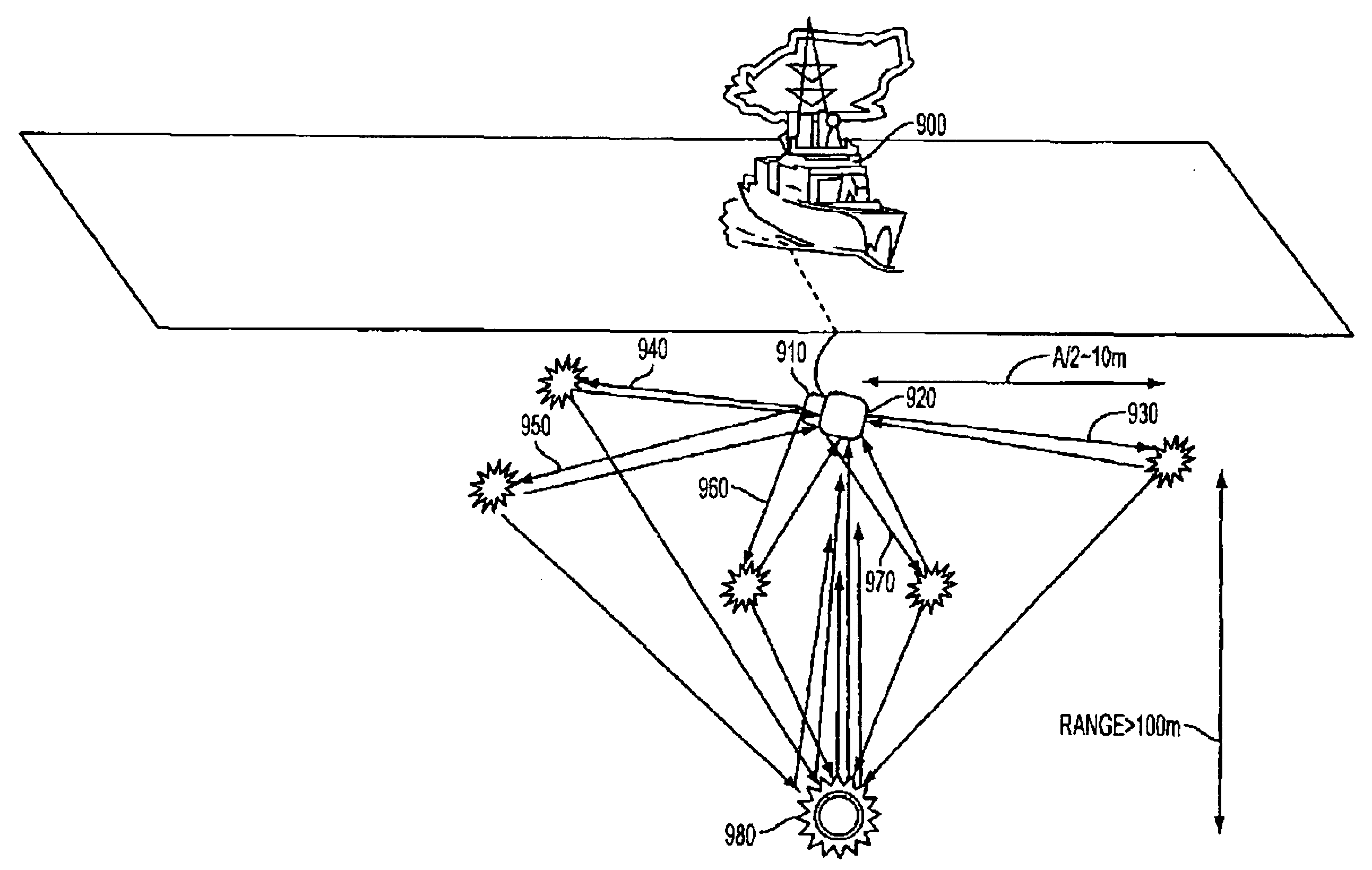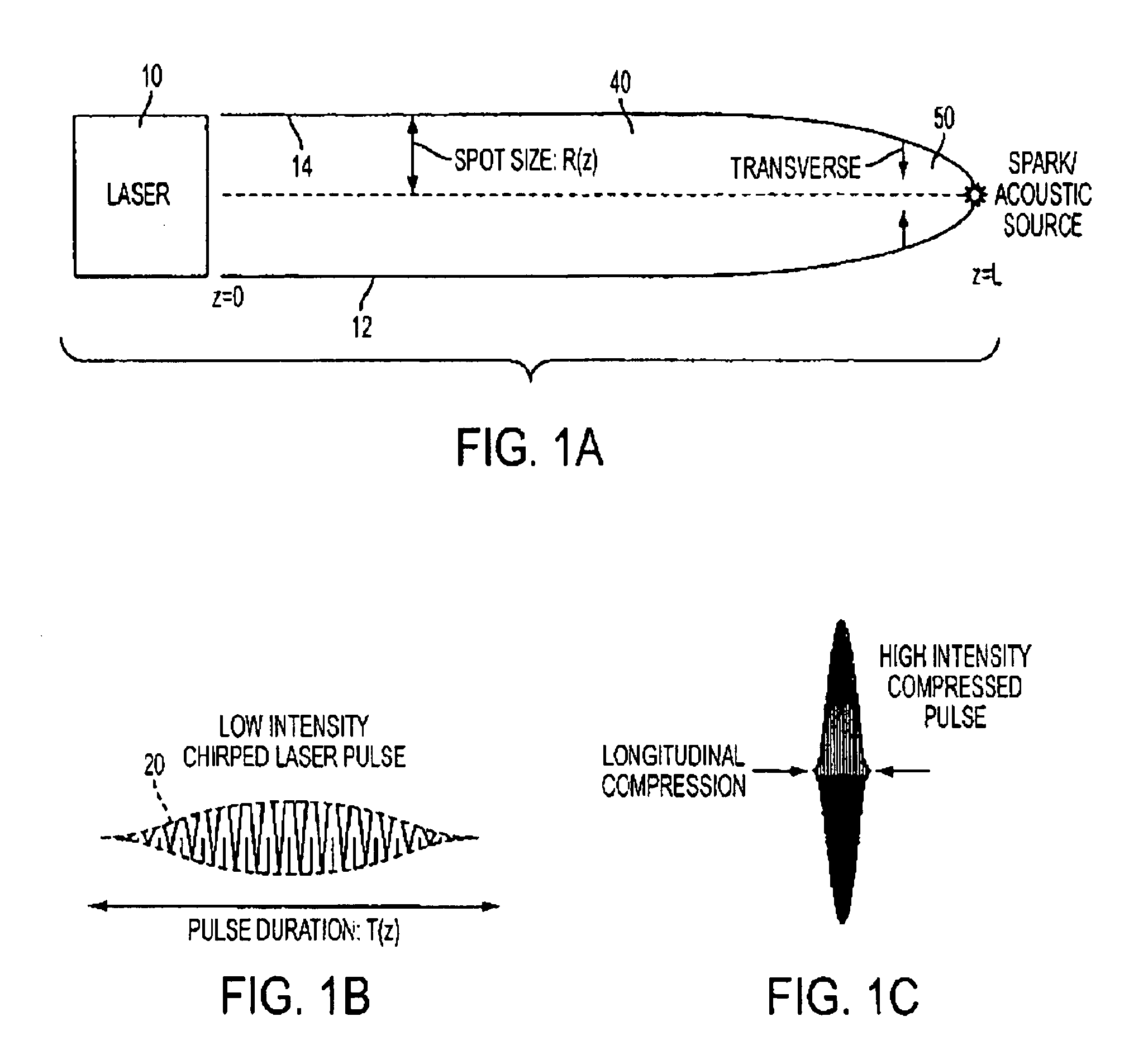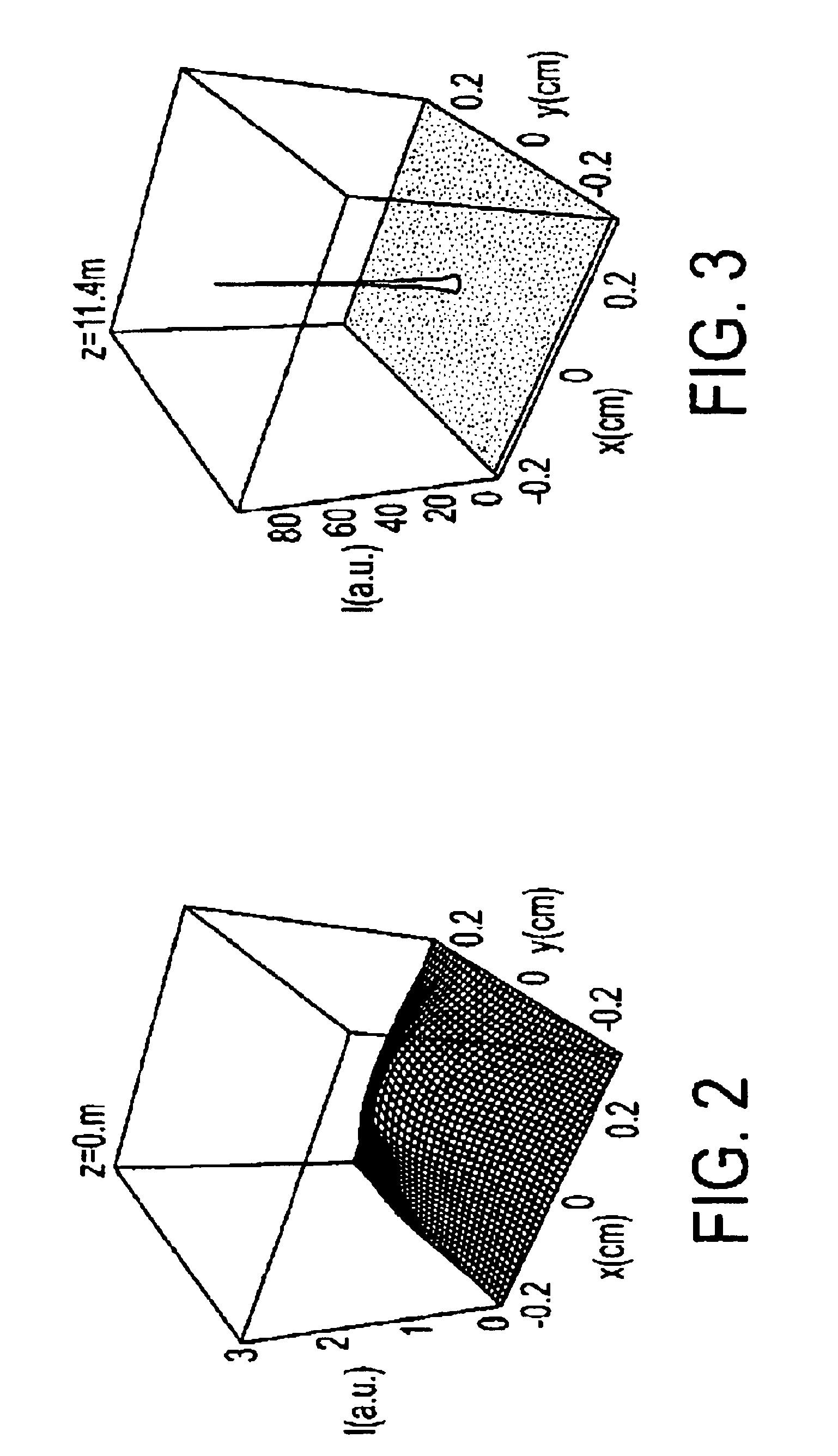Acoustic and optical illumination technique for underwater charaterization of objects/environment
a technology of optical illumination and object charaterization, applied in the direction of optical radiation measurement, instruments, specific gravity measurement, etc., can solve the problems of large illumination energy, unwanted effects and repercussions, environment with large amount of energy, etc., and achieve the effect of greater flexibility in developing applications and higher resolution
- Summary
- Abstract
- Description
- Claims
- Application Information
AI Technical Summary
Benefits of technology
Problems solved by technology
Method used
Image
Examples
Embodiment Construction
[0036]The method for remotely generating a combined acoustic and optical illumination source in water or another liquid having optical group velocity dispersion occurs through multiple mechanisms. The acoustic source is generated through a photo-acoustic sound generation technique, capable of generating an acoustic pulse at a predetermined remote underwater location many meters from the laser source. The remote acoustic generation occurs in two phases: 1) underwater laser pulse propagation and compression using some combination of group velocity dispersion-induced longitudinal compression, and transverse focusing due to the nonlinear refractive index of the liquid, and 2) laser-induced breakdown, heating and vaporization of a liquid volume, followed by rapid expansion and generation of a shock wave that can serve as a useful acoustic pulse. The concurrently generated optical illumination source arises through several potential mechanisms, including but not limited to: incoherent lin...
PUM
 Login to View More
Login to View More Abstract
Description
Claims
Application Information
 Login to View More
Login to View More - R&D
- Intellectual Property
- Life Sciences
- Materials
- Tech Scout
- Unparalleled Data Quality
- Higher Quality Content
- 60% Fewer Hallucinations
Browse by: Latest US Patents, China's latest patents, Technical Efficacy Thesaurus, Application Domain, Technology Topic, Popular Technical Reports.
© 2025 PatSnap. All rights reserved.Legal|Privacy policy|Modern Slavery Act Transparency Statement|Sitemap|About US| Contact US: help@patsnap.com



